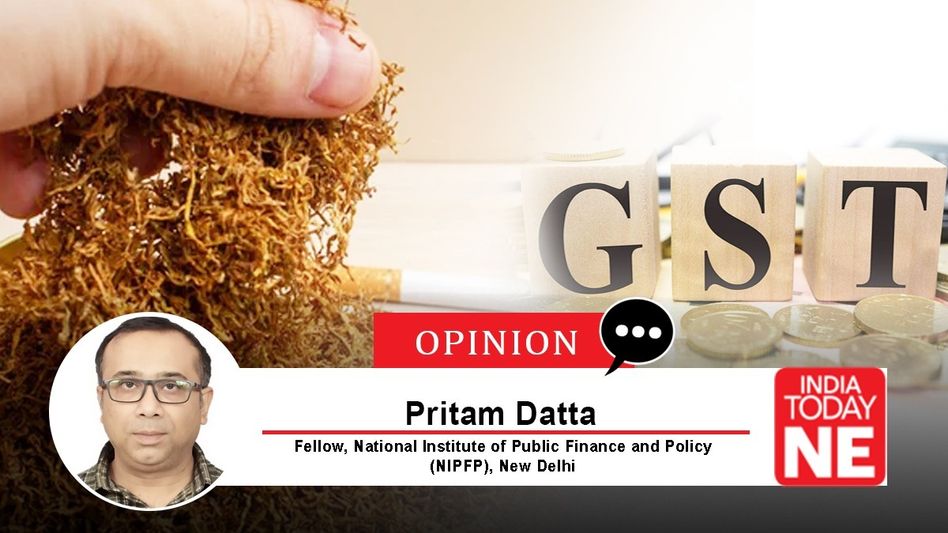Eight Years of GST: A defining moment to reform Tobacco Taxation through a Health Tax
India plans tobacco tax reform eight years post-GST to curb consumption and boost health. The government seeks a balanced policy ensuring revenue and public welfare

Tobacco is widely recognised as the leading preventable cause of death and disease worldwide. Taxation has consistently been identified as the most effective tool to curb its consumption. Viewing tobacco taxation through the lens of government finance—aimed at maximising revenue—and as a corrective tool to discourage consumption of harmful “sin” goods that create negative externalities such as disease, premature death, and lost productivity, may lead to differing prescriptions for optimal tax rates.
However, despite these differing perspectives, there is broad consensus among both public finance specialists and public health experts that, due to tobacco’s addictive nature and low-price sensitivity, it should unquestionably be placed in the highest tax bracket.
Tobacco products have consistently been placed in the highest tax bracket. Under the GST regime, they are taxed at the top slab rate of 28%. In the post-GST era, India transitioned from a predominantly specific tax structure on tobacco products (with the exception of smokeless tobacco) to an ad valorem tax system. However, one constant across both the pre- and post-GST eras has been the continued availability of low-cost tobacco products in India, despite various efforts to curb their consumption. As noted, three years ago in its 139th report (2022), the Parliamentary Standing Committee on Health observed that tobacco products in India remain among the cheapest in the world.
Despite being taxed at the highest slab, tobacco products in India are becoming more affordable—a paradox that poses a key concern for economists and policy experts. Eight years after the introduction of the Goods and Services Tax (GST), India now stands at the threshold of major reforms, most notably, the proposed abolition of the GST Compensation Cess and a comprehensive rationalisation of tax rates and slabs. This presents a unique and timely opportunity to revisit and reform the country’s tobacco taxation structure.
The primary reason tobacco products have become increasingly affordable in India is the lack of regular tax rate revisions. In the pre-GST regime, tobacco taxes were primarily specific, rarely revised, and not indexed to inflation, leading to a gradual decline in the real tax burden over time. In the post-GST era, despite tobacco products being placed in the highest tax slab, stagnant tax rates amid rising incomes and inflation have made these products increasingly affordable, undermining public health efforts. While placing tobacco in the highest GST slab is necessary, it is not sufficient—regular and inflation-adjusted tax increases are essential to reduce affordability and curb consumption effectively.
Under the GST regime, tobacco products are subject to a complex and layered tax structure comprising four key components: Central Excise Duty (CED), National Calamity Contingent Duty (NCCD), ad valorem GST, and the GST Compensation Cess, which includes both ad valorem and specific components. While the GST rate is uniformly set at 28% across all tobacco products, the structure and burden of other tax components vary significantly by product type. This tax design reflects a mix of ad valorem and specific taxation. GST is purely ad valorem (levied on the product's value), while both CED and NCCD are specific taxes (levied per unit or quantity).
The GST Compensation Cess combines both ad valorem and specific elements, adding another layer to the tax burden. Among the three specific taxes, a key distinction lies in their fiscal treatment: unlike the specific component of the GST Compensation Cess, CED and NCCD are not part of the divisible pool of taxes shared with states.
Moreover, they contribute to tax cascading, as both CED and NCCD are included in the base for calculating not only GST but also the ad valorem component of the GST Compensation Cess—resulting in a situation where taxes are levied on other taxes. It is important to note that, within the GST system, tax brackets for tobacco products are fixed to maintain uniformity, predictability, and stability in the indirect tax regime, thereby supporting ease of doing business. These rate slabs are set by the GST Council through consensus between the Centre and States, and any revisions require formal approval and notification. Frequent changes to tobacco tax rates are considered impractical, as they could disrupt manufacturing and distribution, increase compliance burdens, and affect investor confidence in the sector.
As India stands at the threshold of major GST reforms, two key tasks emerge: first, raising the overall tax burden on tobacco products to align with public health goals; and second, establishing a mechanism for periodic tax revisions to keep pace with rising incomes and inflation. This would help ensure that tobacco products do not become increasingly affordable over time, thereby sustaining the impact of taxation on reducing consumption.
The WHO recommends that taxes should constitute at least 75% of the retail price of tobacco products to effectively reduce consumption—a target achieved by many countries globally. In India, however, the tax share is significantly lower, at around 58% for cigarettes and just 22% for bidis.
As discussed in detail in my earlier article, the potential withdrawal of the GST Compensation Cess would further reduce the overall tax burden on cigarettes and other smokeless tobacco products. This underscores a strong case for significantly increasing the GST rate on tobacco products to align with the WHO-recommended benchmark of 75% of the retail price.
To ensure tobacco taxation keeps pace with rising incomes and inflation, periodic revisions are essential—particularly for specific levies like the Central Excise Duty (CED) and the National Calamity Contingent Duty (NCCD). These specific taxes, which are not governed directly by the GST Council, offer a practical and flexible route for adjusting the overall tax burden on tobacco products without altering the core GST structure.
With the scheduled discontinuation of the GST Compensation Cess in March 2026, India faces a crucial policy choice. One option is to merge this cess with existing specific taxes like CED or NCCD. While this would help maintain the current tax burden, it comes with a key limitation: both CED and NCCD are non-divisible taxes retained entirely by the Centre, meaning states would lose access to a share of this revenue.
Given that health is fundamentally a state subject—and considering the increasing demand for health financing at the state level—an alternative and more equitable solution would be to rebrand the GST Compensation Cess as a stand-alone Health Tax within the GST framework. This Health Tax could be redesigned with a cascading structure by including its fixed (specific) component within the GST base (Net Taxable Price + CED + NCCD + Health Tax).
Doing so would amplify its impact on final retail prices, thereby strengthening both fiscal outcomes and public health objectives. In essence, rebranding and redesigning the Compensation Cess as a cascading Health Tax would ensure continuity of revenue post-2026, maintain federal balance by preserving state revenues, and enhance the effectiveness of tobacco taxation as a public health tool.
Copyright©2025 Living Media India Limited. For reprint rights: Syndications Today









